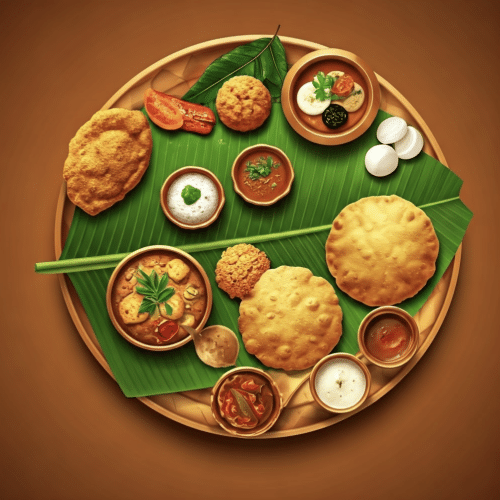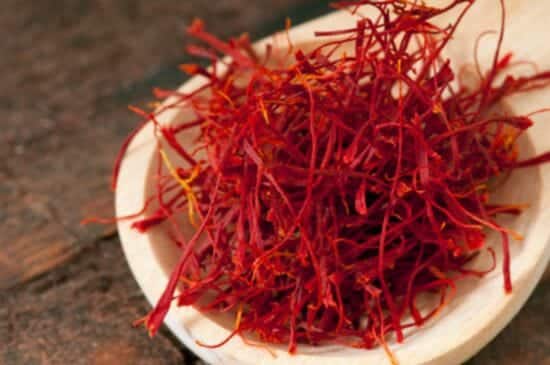Fine dining is not just about eating. It’s about artistry and pushing the boundaries of what we call food. High-end restaurants are known to use premium ingredients like truffles, Wagyu beef and foie gras, but some establishments go further and use truly obscure and weird ingredients that you might not have in your pantry. Here’s a look into some of the weirdest and most intriguing ingredients in fine dining restaurants around the world, including what you might find in your own pantry.

Fine Dining Restaurant
1. Ants
Edible insects have been part of many traditional foods for a long time. Now, ants are showing up in fine dining. Chef René Redzepi, who owns the famous Noma restaurant, is one big reason for their popularity. People like ants because they have a tangy taste from natural formic acid. Chefs like to use them as a garnish, mix them into sauces, or use them as seasoning.
2. Lotus Root
Lotus root is a special ingredient in fine dining. This water plant has a crunchy texture and a gentle, sweet taste. It is often sliced thinly to display its attractive lace pattern. You can enjoy it in soups, stir-fries, or as a crispy topping.
3. Finger Limes
Finger limes are known as “citrus caviar.” They come from Australia and are unique fruit. Inside, they hold small bubbles that are full of juice. When you bite into them, they burst and release a fresh citrus taste. This is why many top chefs like to use them to add a special touch to seafood, salads, and cocktails.
4. Spruce Tips
The young, soft shoots of spruce trees, called spruce tips, are a delightful addition to fine dining. These fragrant, citrus-like needles bring a special flavor. You can find them in syrups and desserts. They also go well with meats, adding a fresh pine taste to your dishes.
5. Chaga Mushrooms
Chaga is a type of fungus that grows on birch trees. It has many nutrients and is famous for its earthy flavor and health benefits. People often put chaga in drinks like tea or blend it into sauces. It gives a rich umami taste to fine dining dishes.
6. Tuna Eyes
Tuna eyes are a well-loved dish in Japan. Some fine dining chefs include them in their meals. These large eyeballs are often cooked slowly in a stew or braised. This method makes them soft and easy to chew. Chefs usually serve them with soy sauce and mirin. Tuna eyes are full of omega-3 fatty acids and have a mild seafood flavor.
7. Fermented Pineapple
Aged pineapple gives fermentation a tropical twist. It builds rich caramel flavors and has a slight sour taste. You can add it to sauces, desserts, or cocktails. This ingredient brings a fun blend of acidity and sweetness to special meals.
8. Jellyfish
Jellyfish, found in Chinese cuisine, has made its way into fine dining due to its creative presentations. It is usually marinated and served cold. This dish has a crunchy texture and absorbs flavors well. Some chefs include it in sashimi-style plates or salads, making it a staple dish that highlights its light ocean flavor, similar to lobster.
9. Cloudberries
Cloudberries grow in Arctic regions. They are golden-orange berries that have a tangy and slightly floral taste, creating a delightful palate experience. This unique flavor makes them a delight to eat. These rare berries are prized for their special taste. You can often see them in fancy desserts, sauces, or enjoyed with game meats.
10. Fugu (Pufferfish)
Fugu is a very dangerous yet popular dish around the world. This Japanese blowfish contains a toxin called tetrodotoxin that can be fatal if not cooked properly. Only licensed chefs are allowed to prepare and serve fugu. In fine dining restaurants, people often enjoy it as sashimi or in hot pots.
11. Gold Leaf & Edible Silver
Using gold and silver leaves may not change the taste, but they bring a feel of luxury to fine dining dishes for many Americans. These edible metals do not have their own flavor. Still, they are often used as a decoration for a lot of things. You can see them on desserts, sushi, and even steaks to add a shiny appearance.
12. Snail Caviar (Escargot Pearls)
Caviar is often associated with sturgeon, but some upscale restaurants serve escargot caviar too. This type of caviar comes from small eggs that look like pearls and are taken from land snails. These pearls have a mild earthy flavor and a slight crunch. Today, they are seen as a special treat in cooking, costing around $82 dollars for each ounce.
13. Milt (Fish Sperm Sac)
Milt is fish sperm or soft roe. In Japan and some parts of Europe, it is a special treat. It feels smooth, like custard, and has a mild taste with a bit of sweetness. People like to eat milt in sushi, tempura, or steamed dishes. Its creamy texture and healthy nutrients make it a popular choice.
14. Sea Grapes (Umibudo)
Umibudo is a type of seaweed that resembles small green grapes. It comes from Okinawa and is popular with top chefs worldwide. In South Korea, people enjoy it for its unique texture and flavor. When you eat these little spheres, they burst in your mouth, giving a salty ocean taste.
15. Giant Water Lilies (Victoria Amazonica Leaves)
These big leaves from the Amazon are now trendy in fine dining. They have a mild vegetable flavor and help support sustainability. Young leaves are lightly cooked and used in salads or as wraps to create lovely presentations.
Conclusion
Fine dining is fun and holds many surprises. For those open to trying new tastes, a good restaurant with luxury ingredients offers a special food journey. Some might feel uneasy, but this shows the creativity and courage in today’s cooking. Ultimately, this experience can change how we view what luxury means in fine cuisine. Would you feel brave enough to try any of these? If so, which one catches your interest the most?
Frequently Asked Questions
How do chefs incorporate unusual ingredients into their dishes?
Chefs in fine dining restaurants use rare ingredients to create new flavors, textures, and ways to show food. They combine these special ingredients with ones people know. This makes a dish that is exciting and delicious. Executive chefs lead these creative cooking efforts, broadening what can be done with food.
Are there any health considerations when consuming dishes with peculiar ingredients?
When trying dishes that have strange ingredients, it’s crucial to think about your health. Some ingredients, like those high in collagen, are not common in meals. They can cause allergies or upset stomachs for some people. It’s smart to be aware of any allergies or diet limits you may have before trying new foods, including veggies. If you have health worries, it’s best to talk to a doctor or nutritionist. They can help you determine if these unique ingredients are safe for you. If you want to save leftovers, remember to put them in the freezer for later. Enjoy exploring new foods, but always put your health and well-being first!
How do chefs discover and experiment with new and bizarre food items for their menus?
Chefs regularly look for and taste new and unique foods to add to their menus in the evolving global food scene. They use their creativity, curiosity, and a spirit of exploration to do this. Here are some ways they achieve it:
- Traveling: Chefs may travel to different regions or countries to explore local cuisines and ingredients, discovering unique flavors and dishes that inspire them.
- Farmer’s Markets and Specialty Stores: When chefs attend farmer’s markets, specialty stores, and ethnic markets, they can discover different or seasonal local produce. This can bring about exciting new ideas for their menus.
- Collaborations: By teaming up with local farmers, producers, or other chefs, they can learn about unique ingredients or new cooking methods that are fresh to them.
- Experimentation: Chefs spend time in the kitchen mixing different flavors, cooking styles, and ways to serve food. This practice helps them come up with new and interesting dishes.
- Food Trends: Chefs stay updated with food trends by going to festivals, reading culinary magazines, and using social media. This allows them to find new and creative ingredients and cooking methods.
Chefs can make great dining experiences when they are open-minded and willing to take risks in the kitchen. This attitude helps them go beyond traditional cuisine and explore new flavors and dishes.












